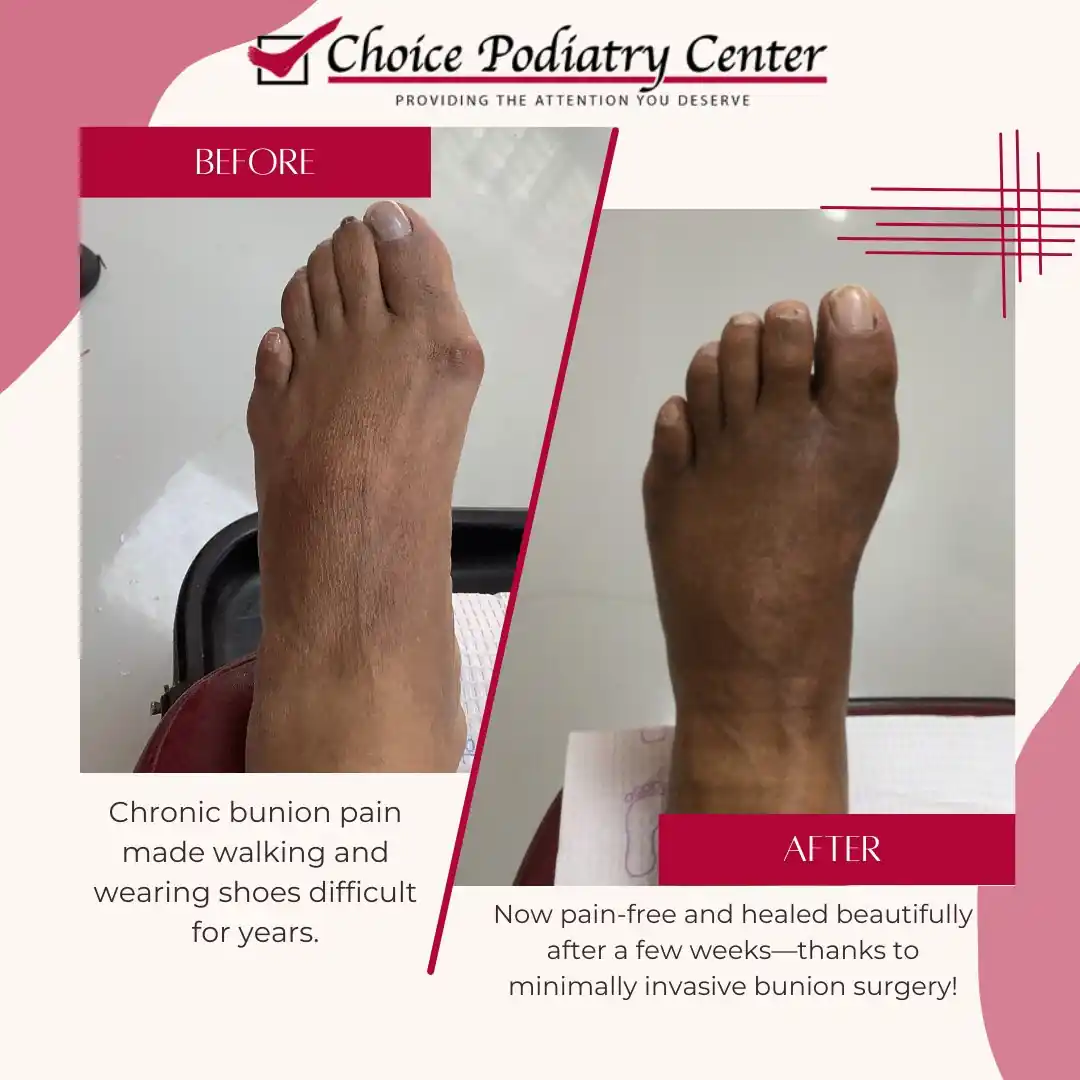
2025-04-28T19:21:00+00:00
Transform Your Life with Minimally Invasive Bunion Surgery at Choice Podiatry Center
Are you tired of chronic bunion pain making every step a struggle? You’re not alone. For many patients, bunions cause daily …
Our Recent Blogs
Plantar Fasciitis: Why Your Heels Hurt and How to Get Relief
2025-03-24T16:37:00+00:00
Understanding Plantar Warts: Causes, Symptoms, and Treatment
2025-02-14T13:07:00+00:00
What to Know About a Broken Toe
2024-12-27T15:29:00+00:00
Gout
2024-12-27T15:27:00+00:00
Heel Spurs
2024-12-27T15:24:00+00:00
What is Flexible Flat Foot?
2024-12-27T15:16:00+00:00
Sports Related Foot And Ankle Injuries
2024-12-27T15:13:00+00:00
How to Deal with Athlete's Foot
2024-12-27T15:09:00+00:00
Ingrown Toenails
2024-12-27T15:02:00+00:00